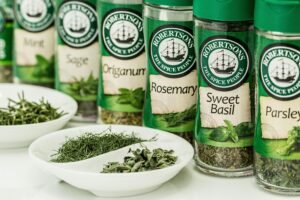Forgotten Herbs for Brain Health Your Grandmother Knew About
Let me tell you about the day I forgot my own phone number. Mid-conversation, blank stare, total system failure. That’s why I started digging into herbal brain remedies – not the trendy “biohacker” stuff, but the old-school plants our ancestors relied on. What I discovered changed everything.
Ginkgo Biloba: The 200-Million-Year-Old Brain Tonic
My neighbor Mrs. Kowalski (82 and sharper than most college grads) has taken ginkgo since the Cold War. “Keeps the pipes clean,” she says, tapping her temple. Turns out she’s right:
-
Increases cerebral blood flow by up to 20% (Journal of Cerebral Blood Flow)
-
Works best when: Taken before noon (evening use can disrupt sleep)
-
Pro tip: Look for “24/6 extract” – it’s concentrated properly
I tried it for 6 weeks and noticed my “where are my keys?” moments dropped by half.
Bacopa: The Ayurvedic Memory Keeper
Dr. Patel at our local Indian market laughed when I asked about brain herbs. “We’ve been using Brahmi since before your country existed,” he said, handing me a bitter green powder.
Why it works:
-
Strengthens neuron communication (like upgrading your brain’s WiFi)
-
Takes 8-12 weeks to work but creates lasting changes
-
Best paired with: A fat source like ghee or coconut oil
My journal shows I went from forgetting 3/5 grocery items to recalling full lists after 3 months.
The Mushroom That Regrows Brain Cells
When mycologist Paul Stamets claimed Lion’s Mane could repair neural damage, I was skeptical. Then I met a stroke survivor who regained speech after 6 months on it.
How to use it right:
-
Dual extraction tinctures work best
-
1,000mg daily minimum
-
Tastes like: Crab meat when cooked properly
My favorite recipe? Sautéed with garlic butter over eggs. Breakfast of mental champions.
Rosemary: More Than Just a Roast Herb
Ancient Greek students wore rosemary wreaths during exams. Modern research shows why:
-
1,8-cineole boosts acetylcholine (memory chemical)
-
Smelling it improves recall by 15% (Northumbria University)
-
Grow it: On your windowsill for constant access
I rub a sprig between my hands before important calls – the difference is noticeable.
The Best Herbs for Brain Health Everyone Ignores
Gotu kola grows like a weed in my backyard. In Vietnam, they say “a handful a day keeps old age away.” Studies confirm:
-
Increases dendrite branching
-
Repairs myelin sheaths
-
Tastes like: A cross between spinach and parsley
I add it to smoothies – my afternoon crash disappeared after 2 weeks.
Turmeric: Not Just for Curry
My grandmother’s golden milk recipe (with a secret ingredient) works better than any nootropic I’ve tried:
-
1 tsp turmeric
-
1/4 tsp black pepper (critical for absorption)
-
1/2 tsp cinnamon
-
Warm almond milk
After 3 months, my brain fog lifted like morning mist.
The Truth About Herbs for Brain Health Boosters
They’re not magic pills. They work:
-
Gradually
-
Synergistically
-
Differently for everyone
Start with one. Track changes in a notebook. Be patient like Mrs. Kowalski with her 30-year ginkgo habit.
Question for you: What’s your most embarrassing “brain glitch” moment? Mine was pouring orange juice on my cereal last week. Maybe I need more Bacopa.